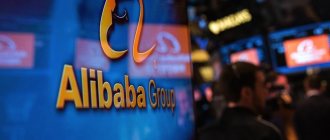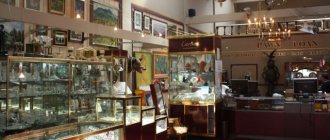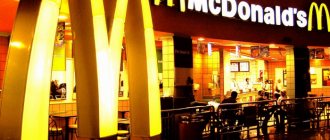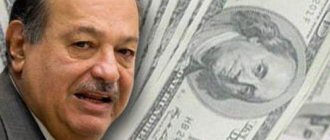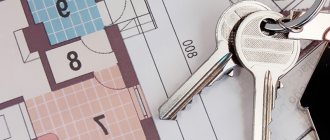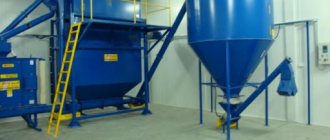Date of birth: February 24, 1955. Steve's mother gave the child up for adoption, and he was adopted by a couple from California - Paul and Clara Jobs, who gave him his name. Paul Jobs worked as a mechanic for a laser supply company, and his wife Clara was an employee of an accounting company.
In 1972, after graduating from high school, Jobs entered the first year of Reed College in Portland (Oregon, USA). However, after six months he dropped out of school because he did not see the point in studying and spending a lot of money on it.
Despite the fact that Steve dropped out of school, he still attended some classes that were truly interesting to him, and remained a free student. But this form of learning is not an easy life for Steve Jobs. In particular, he did not have his own dorm room and had to sleep on the floor while visiting friends. There was no money either - he handed over bottles of Coca Cola for 5 cents so that he had something to buy food with, and on Sundays he went to eat at the Hare Krishna temple.
In 1974, Steve Jobs finally dropped out of college and returned to California. There he met Stephen Wozniak, who recommended that Jobs get a job at Atari, which he did, because he wanted to earn money for a trip to India.
Steve's main interests were the hippie subculture and electronics. Together with Wozniak, they began to attend a computer club in Palo Alto. This club has given a lot to my friends. In particular, it was thanks to him that they invented a device (“blue box”) with which they could make long-distance calls for free. In those days, the Jobs garage became the place where both Steves constantly tinkered with electronics.
The friends did not make the “blue boxes” for long, as Jobs packed his things and went on a trip to India. From there he returned with a lot of impressions and a shaved head.
Silicon Valley
Steven Paul Jobs was born in 1955 in San Francisco, California. His father Abdulfattah Jandali was from Syria, and his mother Joan Schible was the daughter of German emigrants. The Young Students' Union was not approved by the families, so Steve was given up for adoption. Adoptive parents Paul and Clara Jobs moved the boy to the city of Mountain View, located in Santa Clara County. It has become known as "Silicon Valley" due to the abundance of headquarters of many high-tech companies and corporations. As a result, young Stephen grew up next door to engineers working on electronics and other devices. This shaped his personality and developed his interest in the field.
At Mona Loma School, Steve's inquisitive mind was combined with a very bad character. He did not like the school rules and a number of disciplines that were uninteresting to him, which is why the boy regularly had conflicts with teachers. But young Jobs had a patron - a teacher named Mrs. Hill. Seeing considerable talent coupled with a complex character, she set herself the goal of correcting the child. To do this, she had to stimulate Steve with sweets, chocolate and, most importantly, kits for independent work. And all this for the sake of the boy finally coming to his senses and paying attention to other disciplines. And so it happened: exemplary behavior and excellent grades corrected Jobs' reputation. The results were so excellent that the school director advised the child to be transferred from the fourth grade directly to the seventh grade at the Crittenden school. Steve's parents asked him to limit himself to the sixth grade of high school, so that the already characteristic child would not become arrogant.
Problems arose immediately, since the school in Kittenden was located in a disadvantaged area where there were many juvenile hooligans. Steve got it both at school and outside of it. Having received enough punches, the boy began to beg his parents to transfer to another school. The last savings were spent on purchasing a house in the prosperous Los Altos area, and the child went to Homestead School in Cupertino.
When Jobs was just 13 years old, he called Hewlett-Packard co-founder and president William Hewlett to ask for parts for a school project. Impressed by such a brave act, he not only gave him spare parts, but also offered him an internship at the company. There Jobs met and became friends with Steve Wozniak.
Some facts from Jobs' life
It would be wrong to say that Steve Jobs, whose biography many people study today, was a man created from merit alone.
The life of an entrepreneur had its “dark” sides; many of Jobs’ actions were negative. Many people can condemn and blame Steve today. But how many can boast that they could create something truly significant out of practically nothing, that they made a billionaire fortune by starting to earn money by delivering newspapers? Yes, Jobs’ life was not always sunny; the story of his success has pages telling how the entrepreneur “stole” ideas from competitors in order to subsequently profit from them.
A well-known fact from Steve’s life is that he drove a car without license plates and parked in places intended for the disabled - he saved money. True, soon after the operation, Steve began to have every right to do this.
But, nevertheless, the success story of Steve Jobs, the founder, is worthy of being known by many, so that conclusions can be drawn from it, so that people can learn from its example.
Documentary:
Steve Jobs's first projects
After graduating from high school, Jobs attended Reed College in Portland, Oregon, but dropped out after one semester. He was fascinated by Eastern spiritualism and worked part-time on video games for Atari to pay for a trip to India. In 1974, he went there in search of enlightenment. A declassified FBI report states that Steve was using marijuana and LSD at the time, and once told a reporter that LSD was "one of the two or three most important things" in his life.
When Stephen returned to the United States, he again met with Wozniak, who was trying to create a compact computer. For Wozniak it was just a hobby, but the visionary Jobs realized the marketing potential of such a device and convinced his partner to open a joint business. In 1975, they founded a store in their parents' garage, calling the business Apple. To raise the first capital of $1,350, Jobs sold his Volkswagen minibus, and Wozniak sold his Hewlett-Packard calculator.
Even though the first Apple I prototype was sold mainly to hobbyists, friends made enough money to improve the design. In 1977, they introduced the Apple II, the first personal computer with color graphics and a keyboard.
Meeting Wozniak and the first computer
When Jobs was 16 years old and attending Homestead High School, his friend Bill Fernandez introduced him to Steve Wozniak, a student at the University of California, Berkeley. They quickly found a common language and became friends. Once they even called the Vatican, and this call almost reached the Pope. Jobs and Wozniak used their technological know-how to create "blue boxes" - electronic devices that opened up new possibilities for making free calls over long distances.
In 1974, when Steve was 19 years old, he took a position as a video game designer at Atari and invited Wozniak to help him promote the classic arcade game Breakout. Subsequently, Jobs received a good reward for this and shared it with a friend.
Steve Jobs and Steve Wozniak at the first West Coast Computer Fair, 1977 Steve Jobs and Steve Wozniak, 1979 The first Apple computer
The friends attended Homebrew together, a club for computer enthusiasts that had been meeting in Menlo Park, California since 1975. It was there that Wozniak first saw the MITS Altair and decided to create something even simpler. So he built his first computer using a typewriter-like keyboard and a regular TV as a screen. This invention became the prototype of every modern computer and was later named Apple. But Wozniak did not seek to change the world with his projects, he only wanted to demonstrate what he was able to create using not many resources.
Discord in the team
By 1980, competition was intensifying, and sales of the new third version were falling. Then Steve introduced the Lisa computer, named after his daughter with Chris Ann Brennan. However, he did not acknowledge his paternity and denied that the name had anything to do with the girl's name. In any case, this version was also not accepted.
Everything changed when Jobs went on a tour of the Xerox PARC laboratory. He saw scientists working to develop the graphical user interface (GUI) and mouse, Ethernet, laser printing, and object-oriented programming. Jobs became obsessed with GUIs. As they say now, he brazenly “stole developments” from Xerox and incorporated them into his invention.
In 1984, Steven Jobs introduced the Macintosh, named after America's favorite apple variety. The first personal computer with a graphical interface and controlled by a mouse was a real breakthrough. But even here the engineer met with failure. The cost of $2,495 was too high for the average consumer. Sales were falling, and Steve refused to admit the mistake. Tensions with CEO John Sculley led Jobs to leave the company.
Personal life. Relationships, family and children
It seems that Jobs, devoting himself completely to work, simply could not have a personal life. But that's not true. There were several women in his life who played a significant role.
Jobs's first girlfriend was Chris Brennan , with whom he left home in 1972. They settled in the mountains, in a hut near Los Altos. Stephen and Chris shared a passion for Zen Buddhism and a hippie lifestyle.
Lisa, with Stephen . However, Jobs refused to acknowledge the relationship until genetic testing proved it. Despite proof of paternity, Jobs avoided meeting his daughter for a long time. He also denied naming the Apple Lisa computer project after his daughter. But those around me didn’t believe it.
Chris and Lisa
In 1982, Jobs met Joan Baez . She made her living by folk singing and was 14 years older than Stephen. Their relationship ended three years later, after Jobs met a student named Egan . But that affair cannot be called serious love.
Joan Baez
Tina Redse came into Jobs' path . She was a computer consultant and, according to Stephen, the most beautiful woman. Jobs, after four years of romance, even tried to propose, but Tina refused to marry him, and another love ended.
Tina Redse
1989 was the year Steve Jobs and Laurene Powell . She was a bank employee, and the place where the future spouses met was Stanford Business School. In 1990, Stephen and Lauren formalized their relationship. A year later, their son Reed , and five years later, their daughter Erin . In 1998, Steve became the father of another girl, Eve .
Steve and Lauren
Work on Pixar and NeXT
Steve was terrified - Apple was his life. But after four months of traveling and searching for new ideas, he went away and returned with a new plan. Steve founded the NeXT company, which develops a computer platform for universities. He sold all but one of his Apple shares.
“I am convinced that half of what separates successful entrepreneurs from unsuccessful ones is persistence,” Jobs said.
That same year, an enterprising businessman bought a company specializing in computer animation from director George Lucas. Together with a team of specialists, he remade it and gave it the name Pixar. He spent his first five years selling equipment, but the studio's 1989 cartoon unexpectedly won an Oscar. It was a short video called "Tin Toy". RenderMan, a 3D animation product, was soon released. Thanks to him, Pixar made commercials that Disney drew attention to. The result was the familiar Toy Story. After the release of the cartoon, Steve's capital, which owned 80% of the company, grew to more than $1.5 billion.
Who helped Jobs realize his design ideas?
For a long time, Steve's attention was focused on the Macintosh, but then he decided to create a system design language for all Apple products. Determined to find a world-class designer who would be to Apple what Dieter Rams was to Braun, he organized a competition. The winner was Hartmut Esslinger, a German designer previously responsible for the appearance of Sony Trinitron TVs. The main principle that guided him was that “form follows emotion” and not function. He developed a new design for Apple in the 80s: white cases, dense, with rounded edges, thin cutouts, created as much for ventilation as decoration.
A few years ago, Esslinger provided the German publication Zeit Online with photographs of prototype Apple devices that he developed in 1982.
Jobs' passion for design was both his salvation and his curse: indulging his artistic motives, he provoked excessive costs for the company, which is why he was kicked out of the team in 1985. Having rethought everything, Steve moderated his ardor. After his return to Apple, 30-year-old Jonathan Ive, the head of the design company, was about to quit, believing that the corporation was more interested in generating profit than developing a decent design. However, Jobs managed to convince him otherwise:
“Our goal is not just to earn big money, but to create a quality product. The decisions you make based on this philosophy are fundamentally different from those that previously dominated Apple."
Soon, Jony Ive and Steve Jobs would become true comrades, and their joint work would result in the greatest collaboration in the field of industrial design. The first great design triumph to emerge from the collaboration between Jobs and Ive was the iMac, a desktop computer aimed at the home consumer.
“Simplicity is not only about visual style, minimalism and lack of clutter. You have to deeply understand the essence of the product in order to get rid of the parts that are not essential" - Jonathan Ive
The Mystery of Steve Jobs
Steve's character was difficult. The book "Steve Jobs: A Biography", published by Walter Isaacson in 2011, shows not the best sides of his personality. He was a perfectionist and a rather intemperate person. The inventor did not accept things that were not perfect. For example, he repainted the machines in his factory ten times or did not buy furniture for his apartment because none of it corresponded to his ideas. Because of this, everything that surrounded Steve was “as minimalistic as possible.”
Jobs's clothing style was also not varied. From the very beginning of his career, he wore Levi's 501 jeans. He appeared in all presentations in this model. Then a black turtleneck was added to the look. Unlike jeans, it cannot be bought. Japanese designer Issey Miyake sewed them especially for the developer. Steve always wore New Balance sneakers on his feet. The brand even used this fact to promote the 900 series. Jobs carried the 990, 991, 992 and 993 as they became available.
Stephen was no less picky in his dealings with people. He expected full dedication from people, but could humiliate or insult an employee. Despite this, the innovator was highly respected, although feared. He always said:
“I don't try to be attractive to people. My job is to make them become better."
One of the most popular experiments regarding employees was the riddle Steve Jobs gave when applying for a job. It was first used during the inventor's return to Apple. Applicants were shown the order of the letters of the alphabet: A, B, C, D, with a bottom line instead of the next letter. You had to guess what was coming next. The trick is that the answer was not the letter E, but F. Thanks to this seemingly simple test, Steve selected the best team, with which the company rose to a new level. Today, when applying for a job at Apple, they offer new riddles.
In his personal life, Steve was a romantic. He had relationships with singer Joan Baez and IT consultant Tina Redse. In 1991, he married what he said was the only love of his life, Lauren Powell. The couple had three children.
After leaving Apple
When Steve Jobs was fired from the company he personally founded, it was undoubtedly a serious blow. But Steve was energetic and, having sold Apple shares, invested money in new projects. In particular, a new computer, Next, was being developed, which was supposed to become a computer used in education. The project was ultimately not destined to be successful.
Another project in which Steve invested money was the Pixar (Monsters Inc. and many other cool films are the work of Pixar employees), which was engaged in three-dimensional graphics and gave the world a huge number of masterpiece cartoons. Pixar was purchased from George Lucas in 1985.
At the time of 1989, Steve had two companies - Pixar , Next. Things weren't going well for both of them. As you can imagine, Pixar turned out to be more viable. But the press predicted epic failure for both companies. As a result, Pixar focused only on computer animation and graphics (all areas related to Hardware were sold out).
Ultimately, Disney began collaborating with Pixar. What resulted in a success story. As for Next, the Next computer was not destined to become popular. But software and hardware developments began to be used in Apple computers when Steve returned to Apple many years later.
In 1991, Steve Jobs got married and signed a contract with Disney that would bring him a lot of money.
In 1992, Canon was brought in to invest in the Next project.
In 1993, it was decided to concentrate efforts not on hardware, but on software. NextStep operating system will become the core of the currently popular operating system MacOS .
By the mid-nineties, things were not going well for Apple. John Sculley, who once fired Steve Jobs, was fired. Then Apple executives began to replace each other one after another.
As a result, Steve Jobs managed to return to Apple with his new operating system. By 1998, Apple had become a profitable company. The iMac computer (monitor and computer in one case) entered the market. But the PDA was closed because... at that time, it was significantly ahead of its time and brought only losses to the company.
iPod player entered the market . And then we all know what happened. The iPhone has entered the market , which modern students prefer to borrow on credit, eating only snacks throughout the year, as well as numerous desktop Macs and MacBooks (Apple laptops). All these decisions today make Apple a super profitable company. And Apple products themselves today stand apart thanks to their unique technologies in the field of design, hardware and software.
Steve Jobs before his death
Returning to Apple in 1996, Steve showed off the best of his products, which are admired by “Applephiles” today. It all started with the iMac and iBook, and then its operating system. Jobs became CEO of Apple, opened a personal retail chain, and introduced products such as the iPod and iPhone. iTunes media player and iMovie video editor appeared. In 2010, the iPad tablet was released, by which time Steve was already feeling very unwell. A year later he resigned because he could no longer fulfill his duties.
Back in 2003, Stephen was diagnosed with pancreatic cancer. However, against all advice, he refused the operation for nine long months. Instead, true to the ideals of his youth, he tried alternative diets and treatments, including acupuncture and visits to a psychic. It was only in July 2004 that he agreed to the operation. For some time the disease subsided, but after 5 years everything happened again. In 2009, Steve went on medical leave for six months. Although he publicly denied it, the truth was that the cancer had returned. Two years later, on September 5, 2011, Steve Jobs died at home.
Return to Apple
The end of 1996 was a difficult time for Apple, which forced the company to acquire NexT, making Steve Jobs an advisor to the chairman of the board of directors, and in 1997, an interim director of Apple.
As part of the recovery program, Jobs closed a number of unprofitable areas of the corporation: Newton, Cyberdog, OpenDoc. And in 1998, the first iMac was released, which again led to an increase in Apple sales.
Steve Jobs' effective policy to overcome the Apple crisis allowed him to become CEO of the corporation in 2000.
Thanks to his successful leadership, the world saw such hit products as the iPod in 2001, Apple TV in 2006, iPhone in 2007, Macbook Air in 2008, iPad in 2010.
Movie about Jobs
Steve Jobs took Apple to the top not only of the technology industry, but of all American businesses. Many argue that he was not an inventor, but skillfully used and refined other people's ideas. He had a special intuition for determining which product could become successful. Jobs' life has been written about and films made more than once. In 2006, Steve Wozniak released his autobiography, iWoz, which focused heavily on Steve. There were also books about his management style and business rules. Documentary films include the innovator's meeting with Robert Cringley and Steve Jobs: The Man in the Machine (2020).
The feature film Jobs: Empire of Seduction with Ashton Kutcher was released in 2013. It showed Stephen's journey from just a college kid to the biggest personality in the tech world. The latest film, “Steve Jobs,” was released in 2015. The main role was played by Michael Fassbender.
Revolution in the world of gadgets
In 2001, Steve introduced the first Apple player called the iPod. Later, the sale of this product brought the main income to the company, as the MP3 player became the fastest and most capacious player of that time.
The very first iPod
The first iPod had, firstly, a touch-sensitive scroll wheel, which was an extraordinary innovation at that time, and secondly, the player came with a memory capacity of 5 or 10 gigabytes. The slogan of the new product was: “A thousand songs in your pocket!” The Evolution of the iPod Since then, the iPod has been released every year, and with each generation the storage capacity has increased. In 2004, the player got a color screen, and in 2005 it got the ability to play video. In 2006, a new line of iPod Classic was released, which was distinguished by a particularly large amount of memory - the most capacious iPod could load 160 gigabytes of music, photos and videos. Not every personal computer could boast such a hard drive capacity.
In parallel, since 2004, Apple released the iPod Mini (later transformed into the iPod Nano) and the ultra-portable iPod Shuffle, which lost its screen.
In 2007, the iPhone touchscreen mobile phone went on sale. This was not the first phone with a touch screen. For example, Ericsson released its first phone with a sensor already in 2000, long before the merger with Sony. In 2004, Philips released the 550 model with a touch-sensitive screen. Three years before the first iPhone, Nokia, at that time the flagship in the mobile device market, introduced the 7710 touchphone based on Symbian OS.
The first iPhone hit stores in the summer of 2007
The iPhone, released in June 2007 and retroactively dubbed the iPhone 2G, had a very responsive sensor, wireless connectivity, and no competing model had the same thin and sleek design. The iPhone had quite a few shortcomings, for example, it did not support 3G networks, but it had a separate OS that allowed you to download applications from the App Store.
Steve Jobs had a keen sense of what the customer needed
The iPhone 2G marked the beginning of the death of feature phones and the smartphone mania that swept the world. Since then, a new iPhone has traditionally been released every year (usually in the fall) and, despite the high cost compared to its competitors, it has consistently maintained sales levels. And already in 2008, Apple demonstrated the thinnest laptop on the planet, the MacBook Air.
Steve Jobs demonstrates iPhone to Dmitry Medvedev in Moscow
In 2010, Jobs introduced the iPad, an Internet tablet, which caused confusion among the public. However, Stephen's ability to convince the buyer that he needed this product raised tablet sales to 15 million copies a year. Subsequently, a smaller version of the iPad Mini was released, and in 2020, alas, without Steven Jobs, sales of the iPad Pro, a tablet with a larger screen diagonal, began. The developing market for mobile applications has made the iPad a full-fledged, and in many cases, a more convenient replacement for a laptop. Today, you can write music, take notes, draw, design, and more on your iPad. Steve Jobs and his 10 rules for success Jobs had a keen sense of what the buyer needed, so he sought to create a miniature machine that could satisfy every whim of the modern user. Stephen's ideas were not always innovative; he skillfully used existing developments of others, but brought them to perfection and “packed them in a beautiful wrapper.” After his death, new Apple products like the Apple Watch were no longer revolutionary.
Steve Jobs presents the first iPad
First business or “blue box”
Jobs managed to implement his first business project, which brought in a good income while he was still at school. In 1971, Wozniak read an article in Esquire magazine about a guy under the pseudonym Captain Crunch. It said that he was able to break the telephone code using an ordinary whistle (it created the necessary tone to capture the line), which at that time was placed in oatmeal. In addition to the whistle, Crunch used a small device to dial the number. Wozniak and Jobs decided to create a similar “box”. The first model that Wozniak made turned out to be not entirely complete. The device produced an inaccurate signal using a whistle. Wozniak decided to make the device completely electronic. After this, the device worked as it should.
At first, the friends used this box for fun: they called all over the world and pranked people. After a while, Jobs realized that he could make good money from this invention. The guys began collecting "blue boxes" and selling them to students and local residents, despite the fact that this was illegal and very risky. At first, it cost $80 to make the “box,” but then Wozniak began assembling them on a printed circuit board, which helped increase productivity and reduce the cost by half—to $40. The friends sold the finished “blue boxes” for $150, and the profits were divided in half. In total they managed to make and then sell about a hundred “boxes”. The guys decided to shut down this business after the police became interested in them.
Jobs believed that if he and Voznik had not gone through this “blue box,” there might not have been an Apple PC. He also realized that electronics can bring not only joy, but also good profit.
Working at Atari
After dropping out, Steve Jobs lived on the college campus for another year and a half.
In the fall of 1974, he returned to California and got a job at Atari as a technician (this company produced video games), where he received $5 an hour. At that time, Jobs had no long-term plans, he just wanted to earn money to visit India.
In the same 1974, Jobs goes to India, where he will try to find spiritual enlightenment. Steve spent seven whole months in a foreign country, after which he returned to his homeland. He arrived in the United States thinner, with a tanned body, shaved head and dressed in traditional Indian clothing.
In 1975, Jobs continued to work at Atari. There, Steve was later given an unusual task - to reduce the number of chips in the board of one of the video games - and was promised that for each chip removed he would receive $100. Jobs didn't know much about circuit boards compared to Wozniak, who was working at Hewlett-Packard at the time. He asked Wozniak to do the job for half the reward. An additional difficulty was that only four days were given to complete the task. Wozniak sacrificed sleep, but managed to meet the deadline. Atari engineers were surprised when they saw the result. After all, the board contained only 44 chips. Steve gave his friend $350 for the work done. After a while, it turned out that Jobs had deceived Wozniak, telling him that Atari had paid him $700 for the work he did. He didn’t tell him that if he could keep it to less than 50 thousand chips, he would receive a $5,000 bonus. It turned out that Jobs appropriated the bulk of the money. In addition, Steve also lied about the fact that the task had to be completed in four days: he just wanted to arrive at Friedland’s farm as quickly as possible for the apple harvest. After he received the money, he left Atari. When the truth about the real bonus was revealed to Wozniak, he was upset and said that if Steve had told him about his financial difficulties, he would have given him his share of the money anyway. Ten years after the story broke, Jobs continued to insist that he gave Woz exactly half of the money he received.
Joining the homemade computer club
In March 1975, the first meeting of a group of fans was held, which called itself the “Homemade Computer Club.” At first, the meetings took place in Menlo Park, in the garage of an unemployed engineer named Gordon French. Many club members were also engineers and geeks who dreamed of computer technology. Everyone who gathered at these meetings was united by the desire to change the usual perception of computers (previously it was believed that computers were incredibly expensive and huge, so they were inaccessible to ordinary citizens). In short, they wanted everyone to be able to build a PC in their own home. And at meetings they shared their drawings, developments and thoughts.
Stephen Wozniak was also at the first meeting. After the first meeting, Wozniak received so much inspiration that he immediately began designing a machine that would later be called Apple 1. Three months later, he came to the first result for that time - displaying characters that were typed on the keyboard on the screen. Woz shared his result with Steve Jobs, who was incredibly impressed by the machine.
After what he saw, Jobs also began going to meetings at the Homemade Computer Club. When Woz assembled his computer, he decided to show it to the whole club. Steve helped a friend bring the car and also set it up.
In addition, Jobs obtained free chips for the computer, which were scarce and very expensive at that time. When the club began to attract more than a hundred people, its meetings began to be held in the Stanford Center under the leadership of Lee Felsenstein.
After a while, Jobs invited Wozniak to make a business out of his invention. First, he persuaded Woz to stop distributing his developed drawings to everyone, although this was a contradiction of the “computer club”, which was created for the exchange of ideas and developments. Steve also noticed that many members of the club mainly study only the drawings, and no one ever gets to the point of creating a working sample. This suggests that they most likely do not have enough skills and time. After this, he invites Woz to start selling circuit boards at the club. Jobs calculated that it cost $20 to produce one board, and the price for which it could be sold was twice that. At first, Wozniak did not see any prospects in this idea, because starting this business required more than $1,000, and in order to recoup these costs, he needed to sell 50 boards. Although there were approximately 500 people attending the club at the time, many wanted to purchase the off-the-shelf cars that were being produced at the time, one of them the Altair 8800. Woz believed that there were not enough potential customers to make sales. But Jobs was an excellent psychologist and knew his friend very well. Instead of convincing Wozniak that this idea could bring good income, he said:
“I thought it would be cool if two best friends started their own company.”
After these words, I could no longer refuse! (Steve Wozniak)

